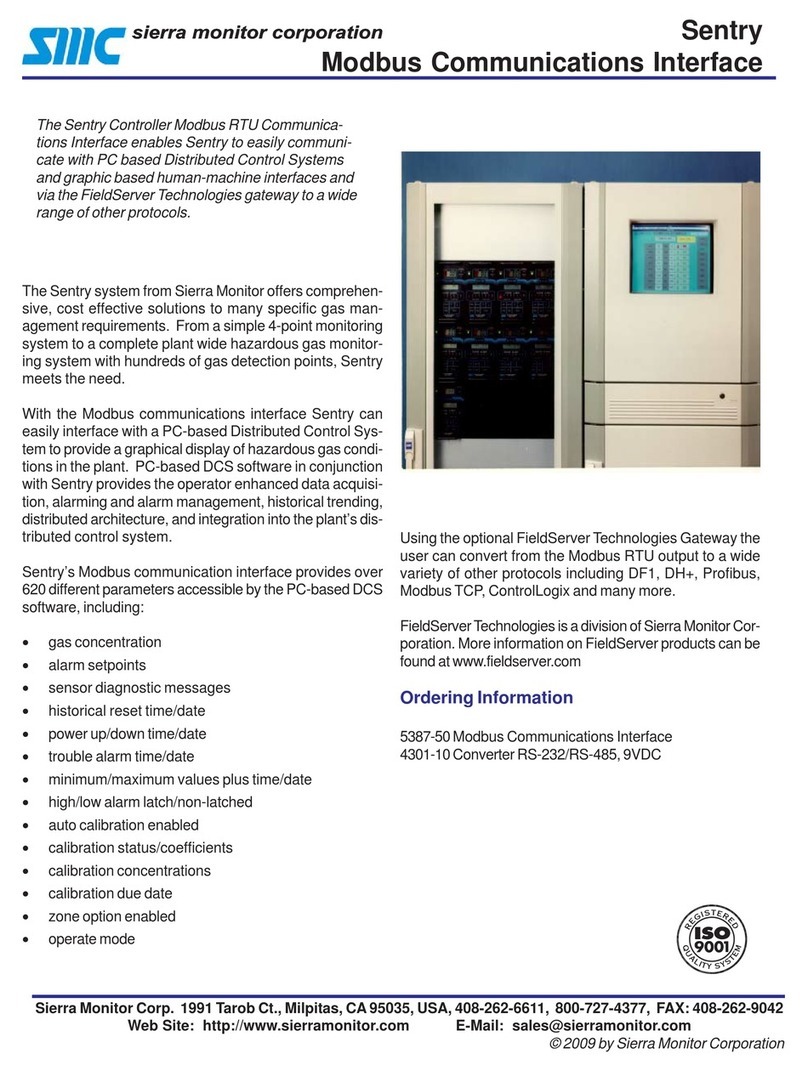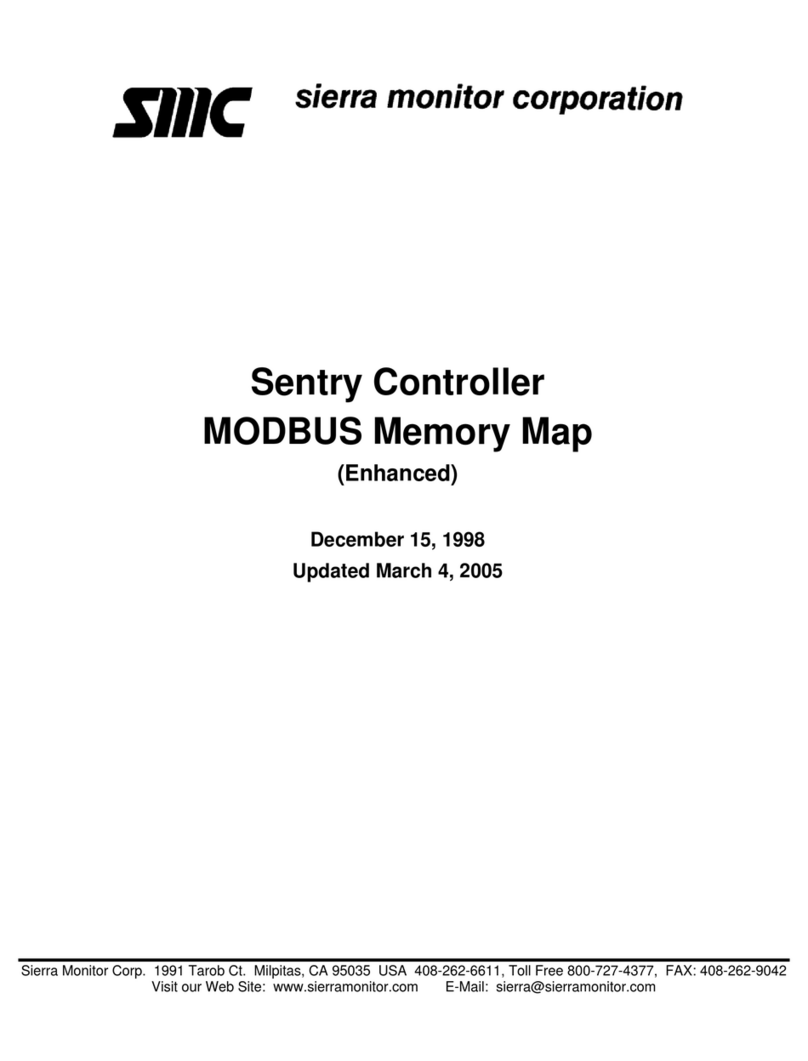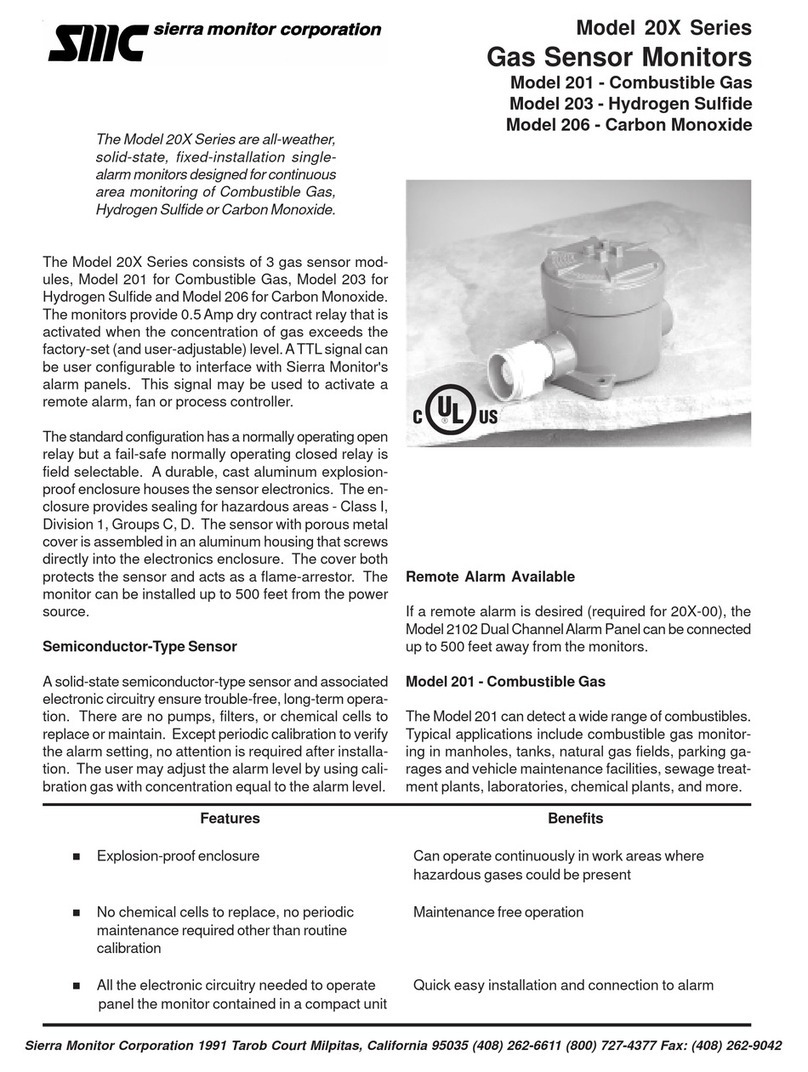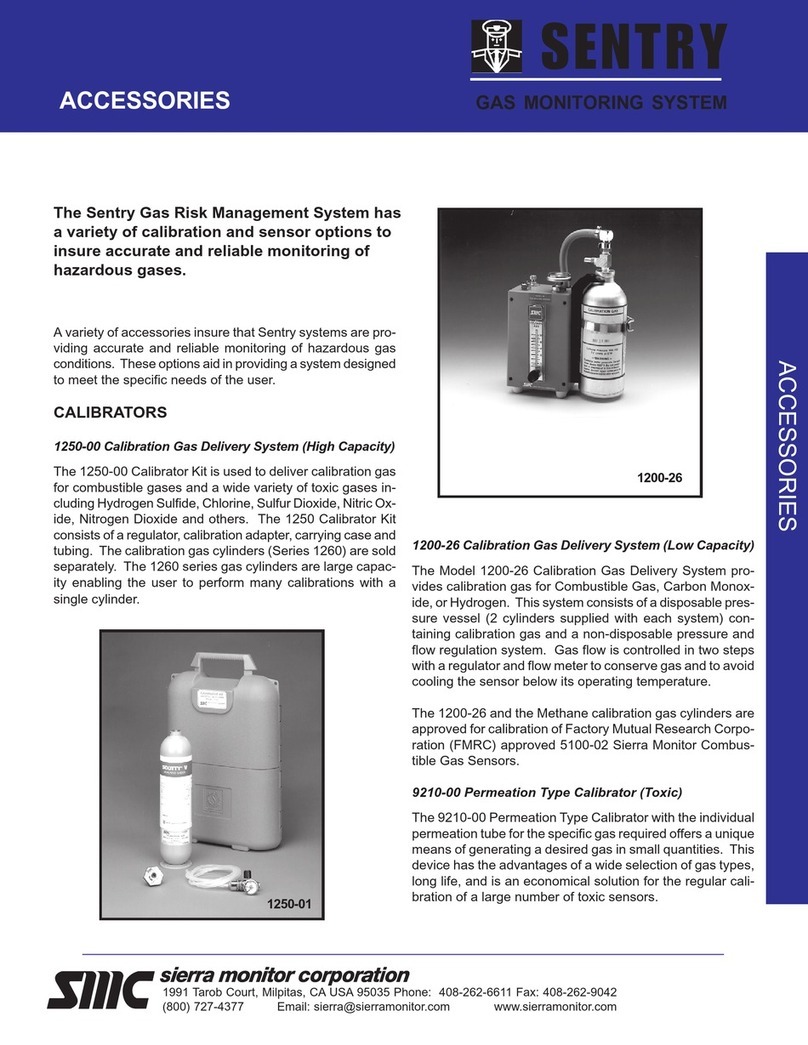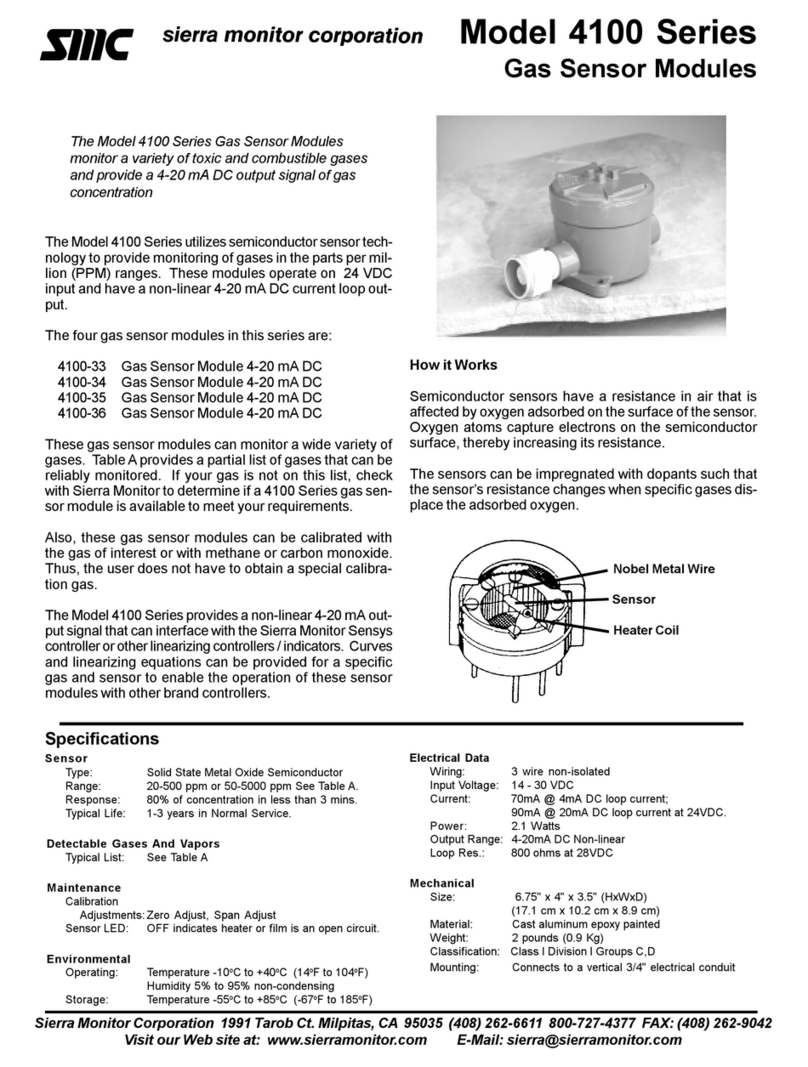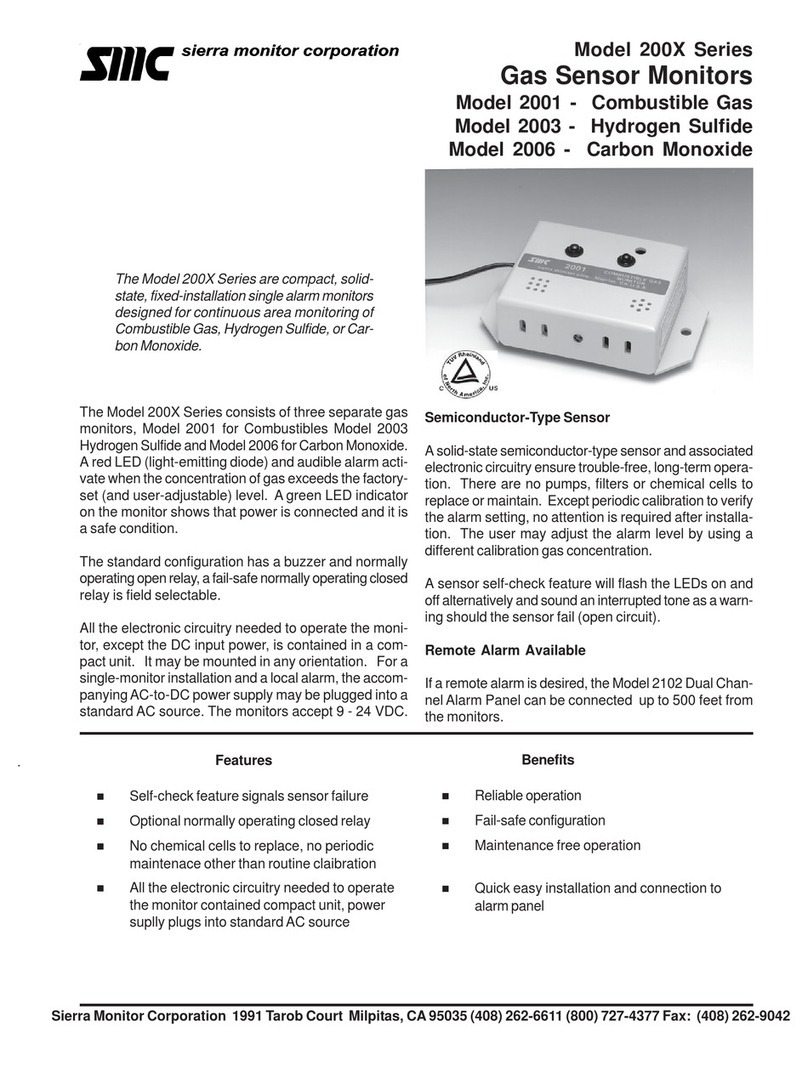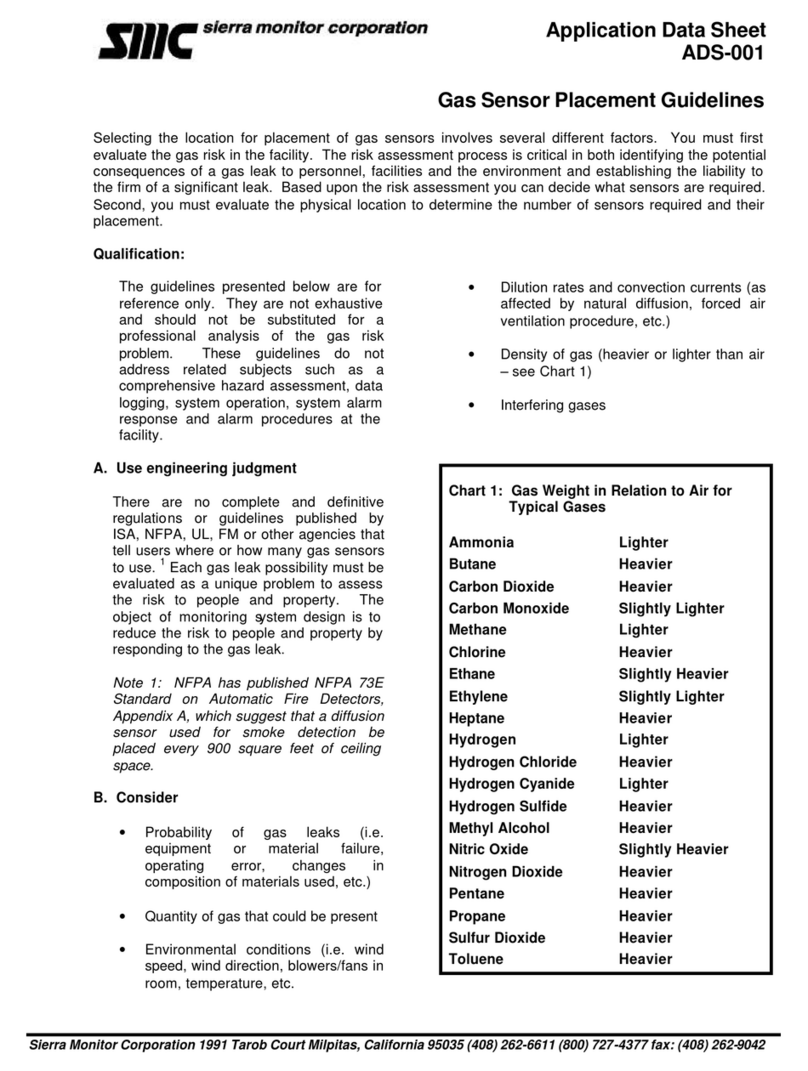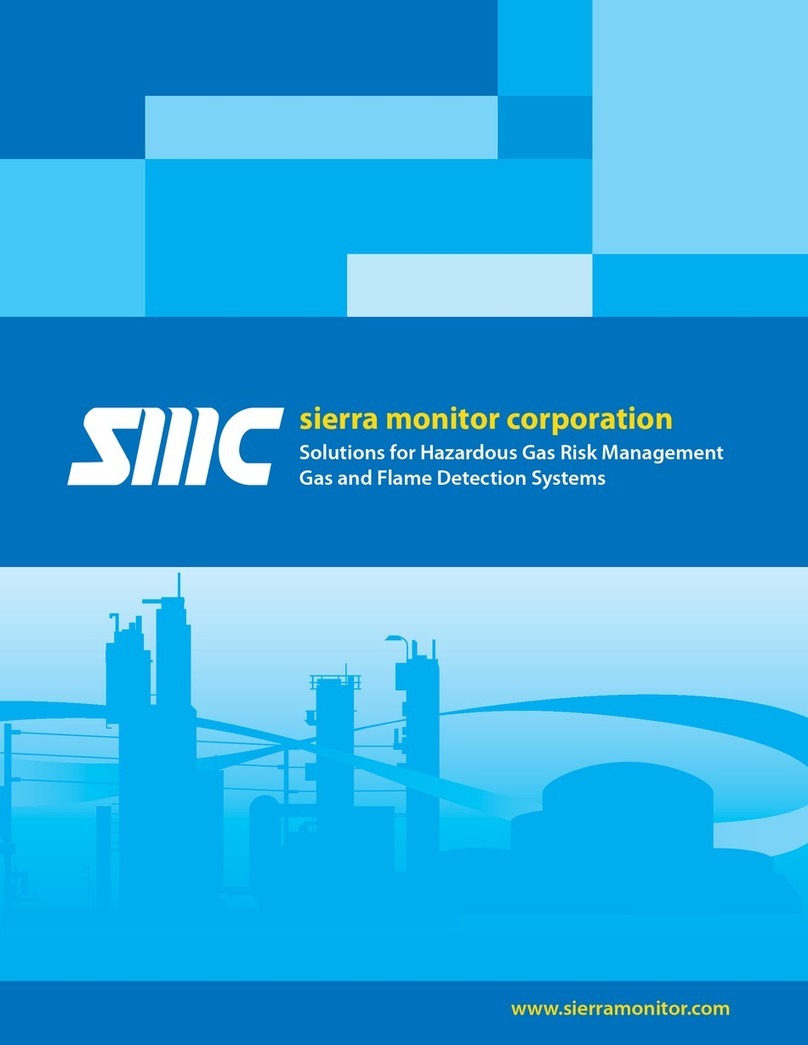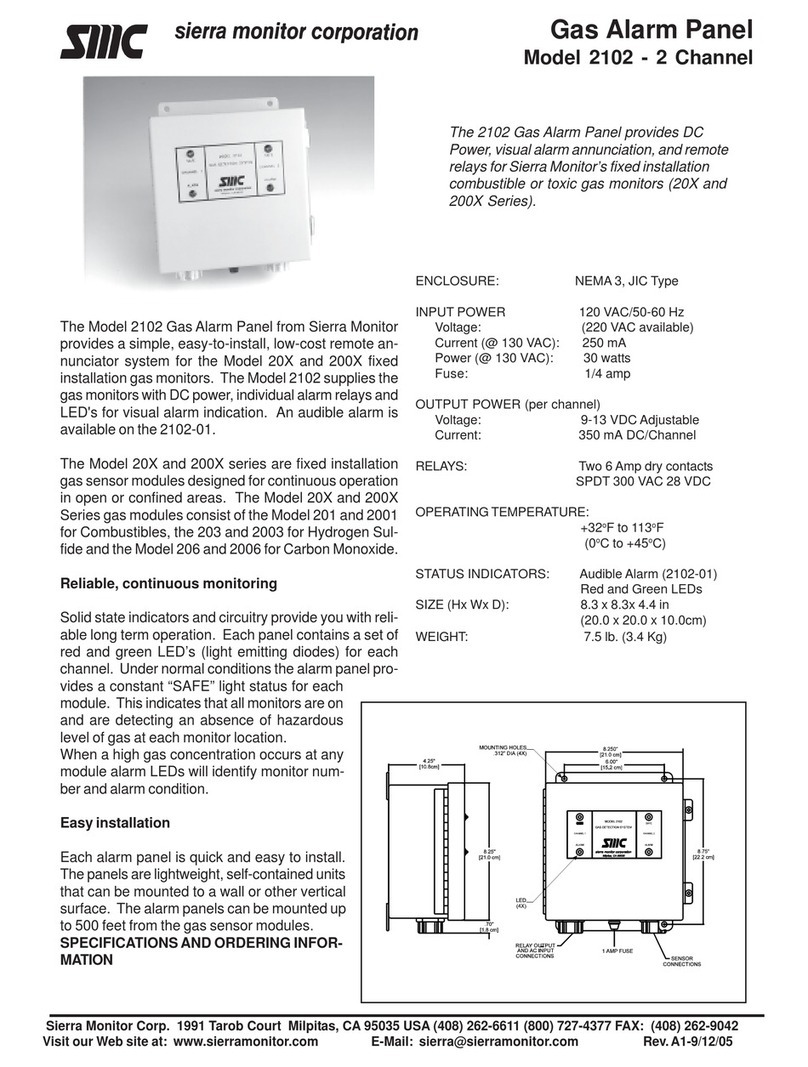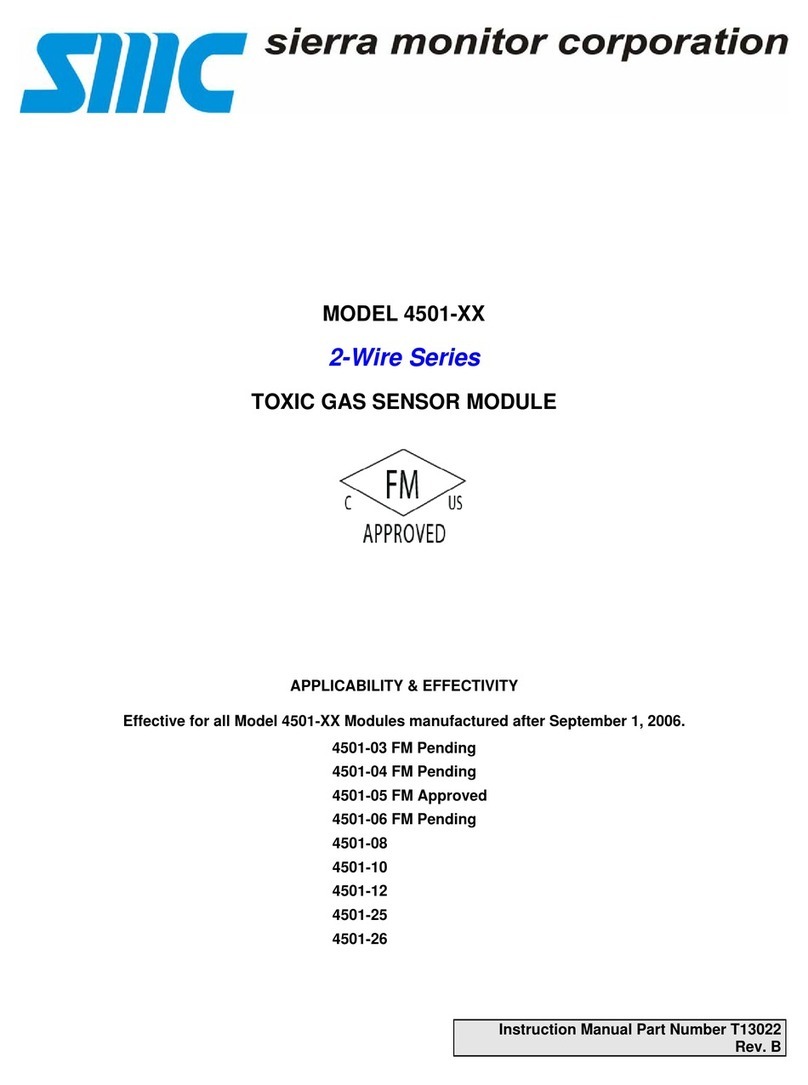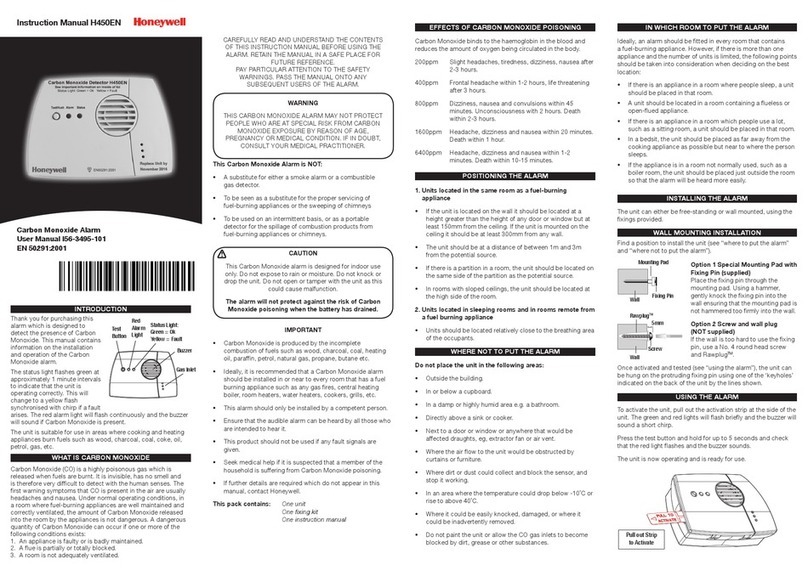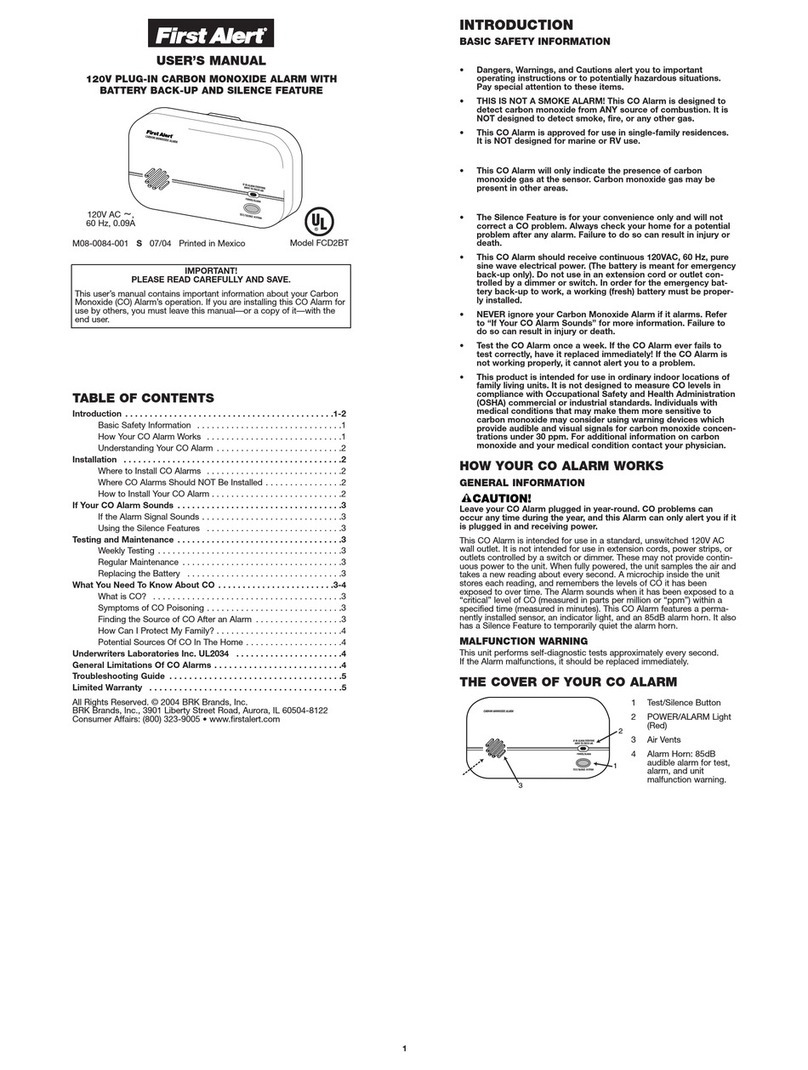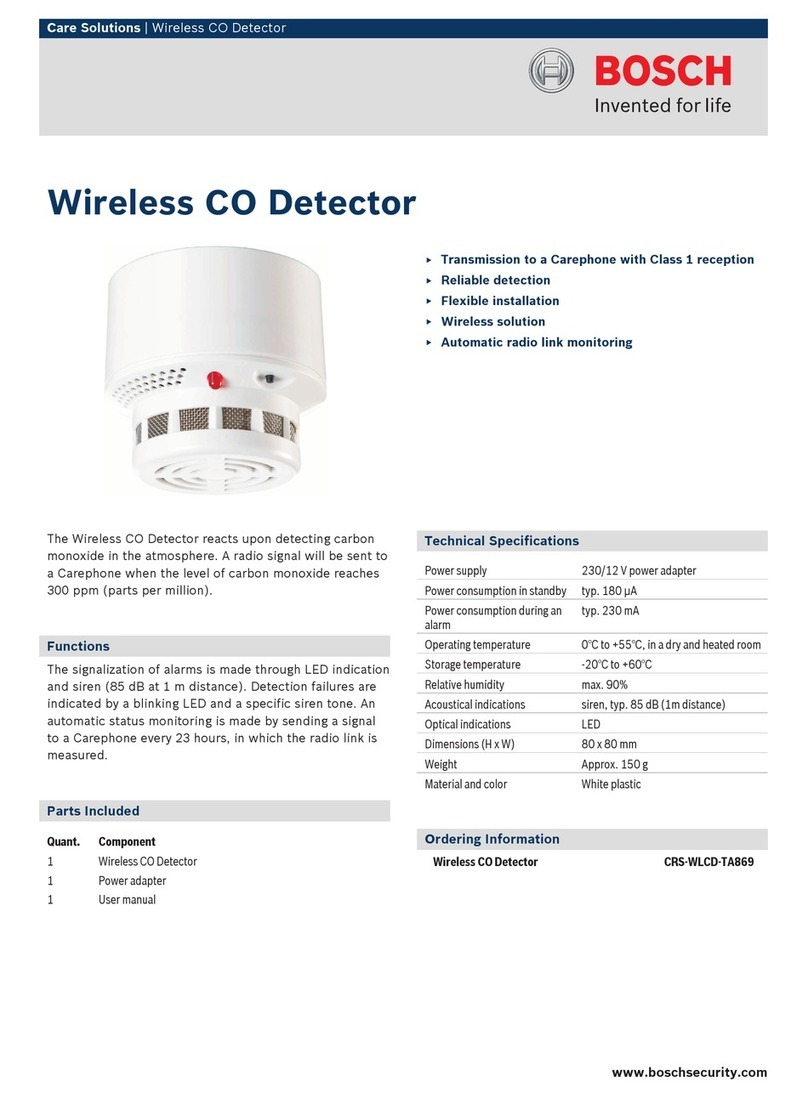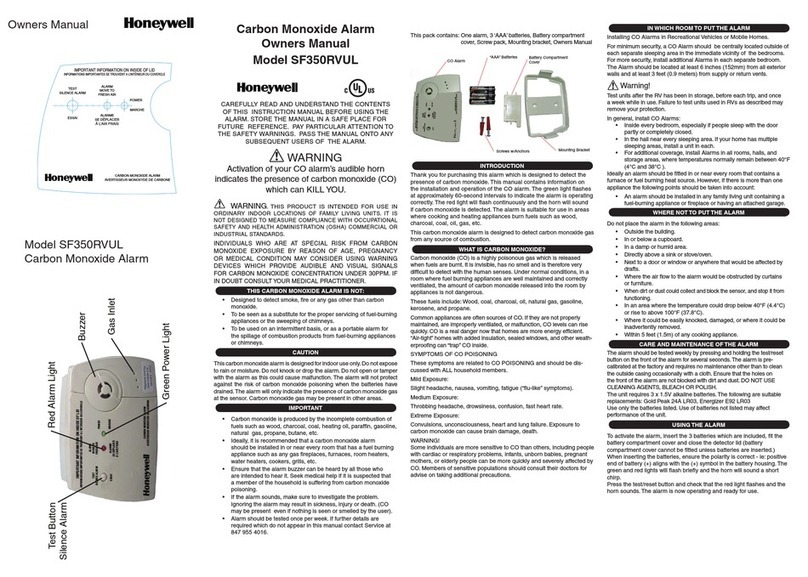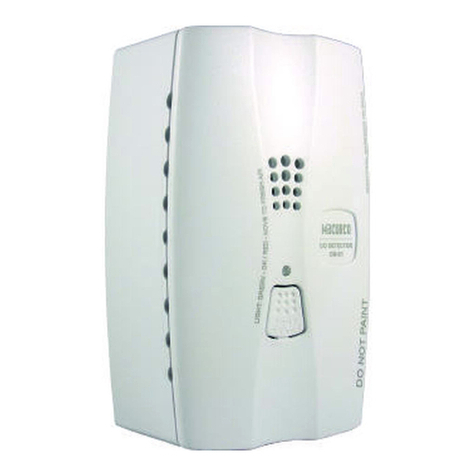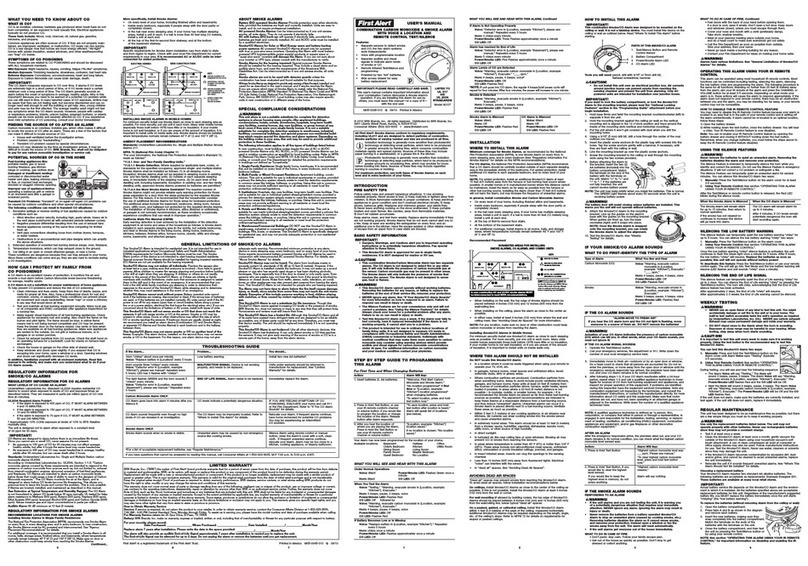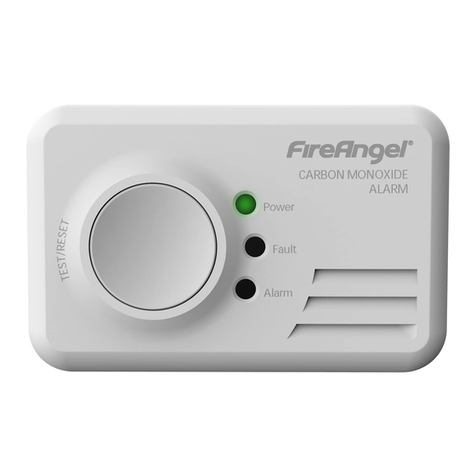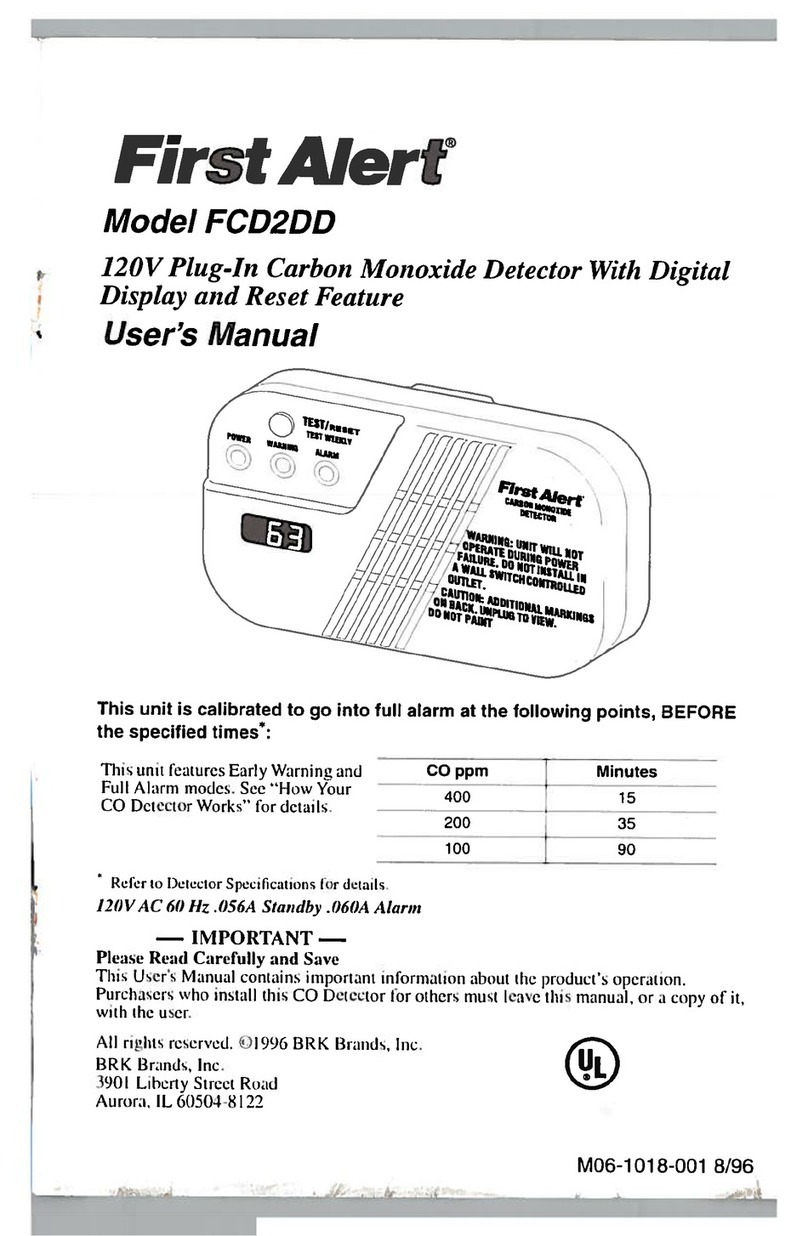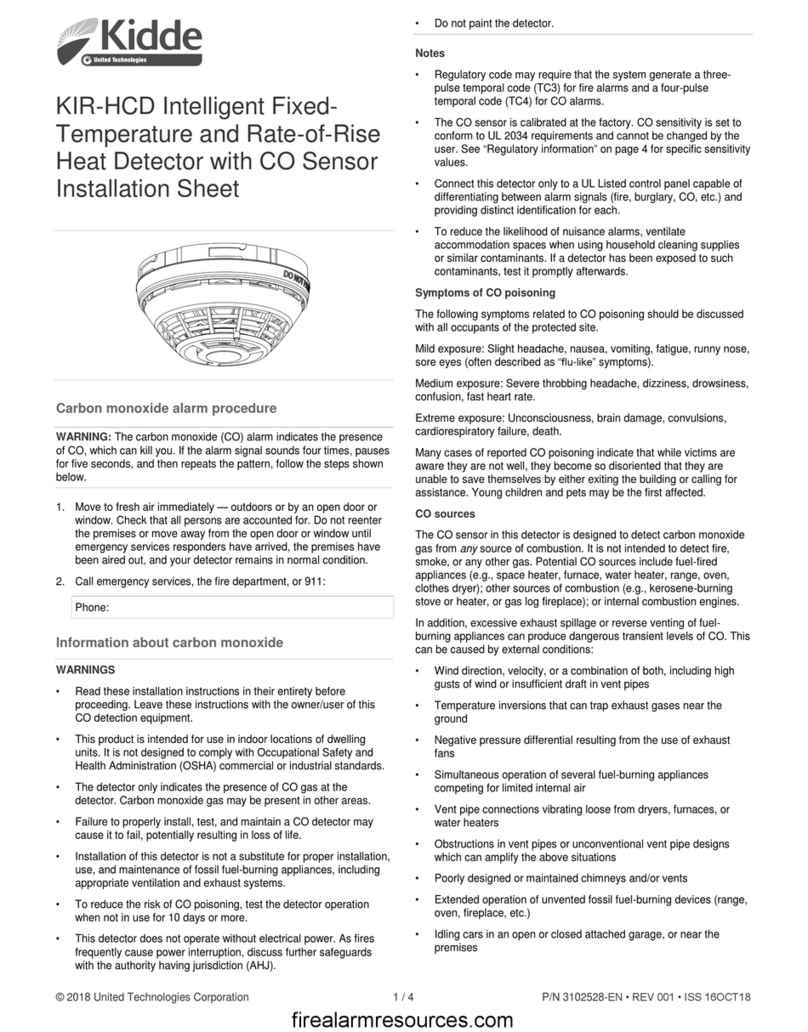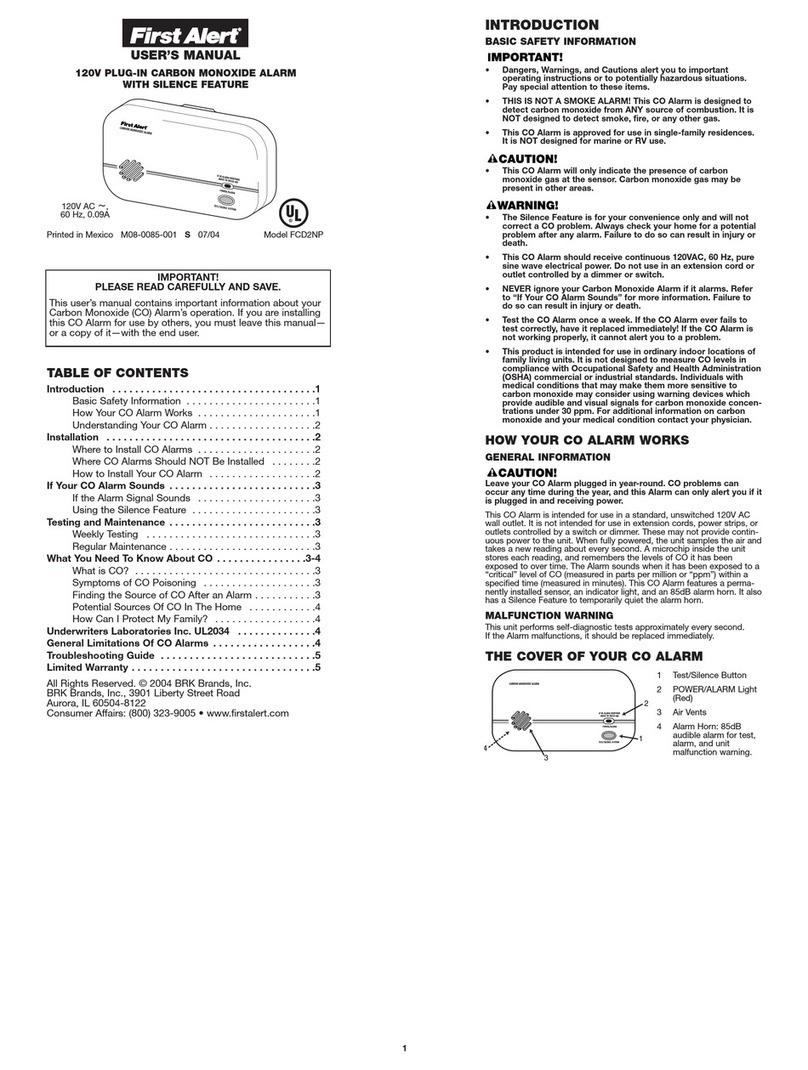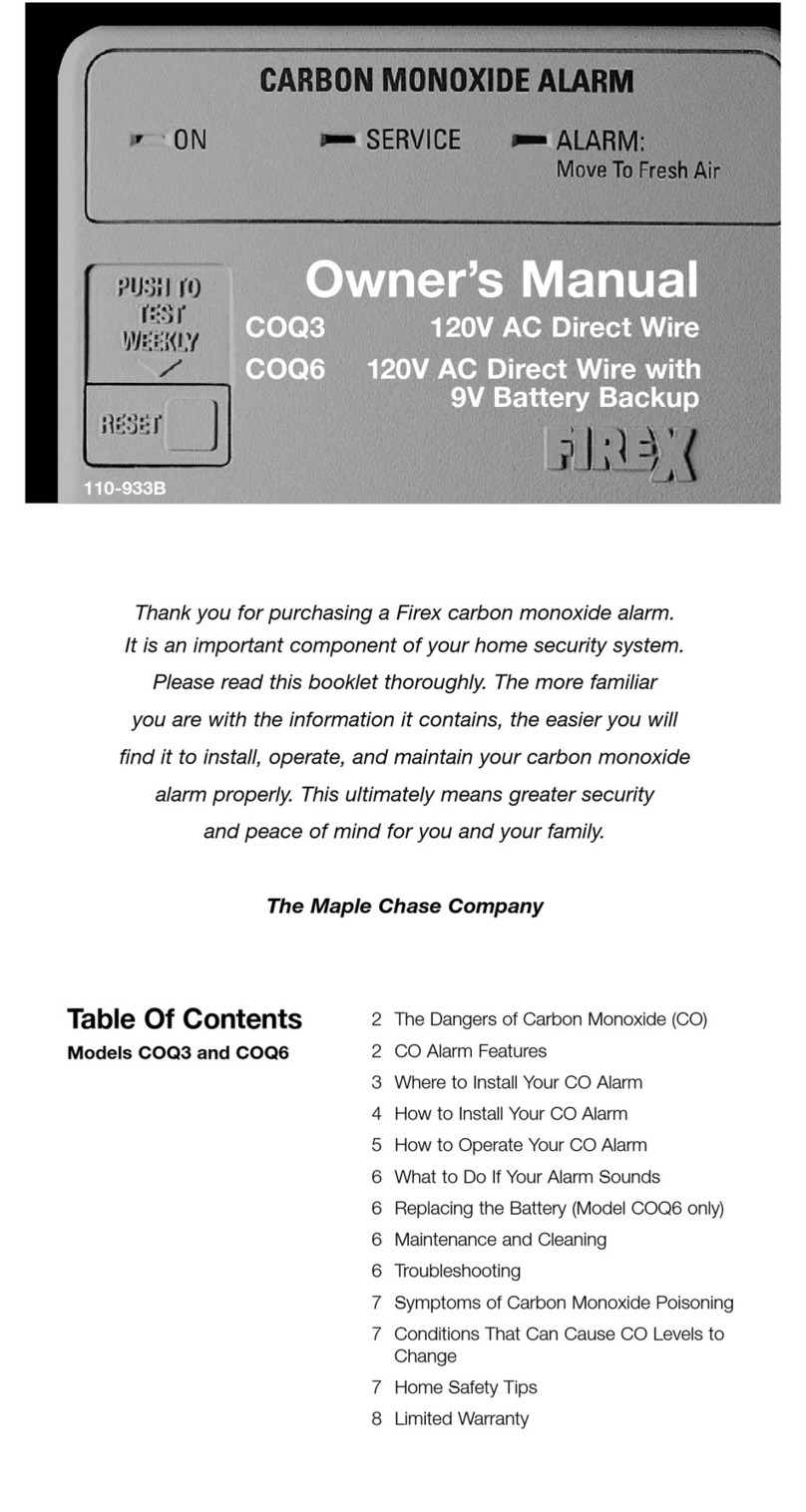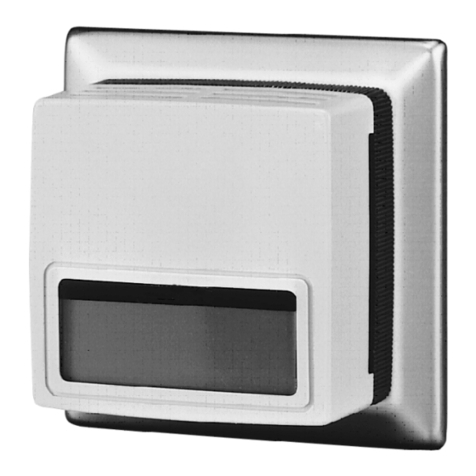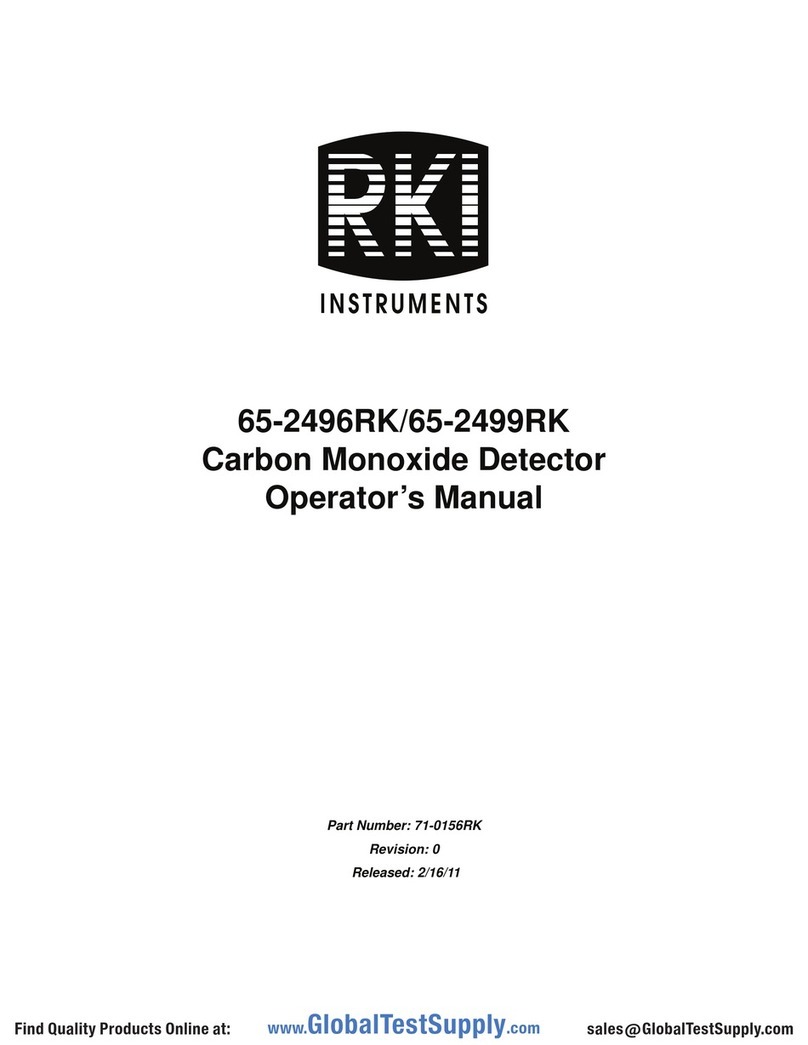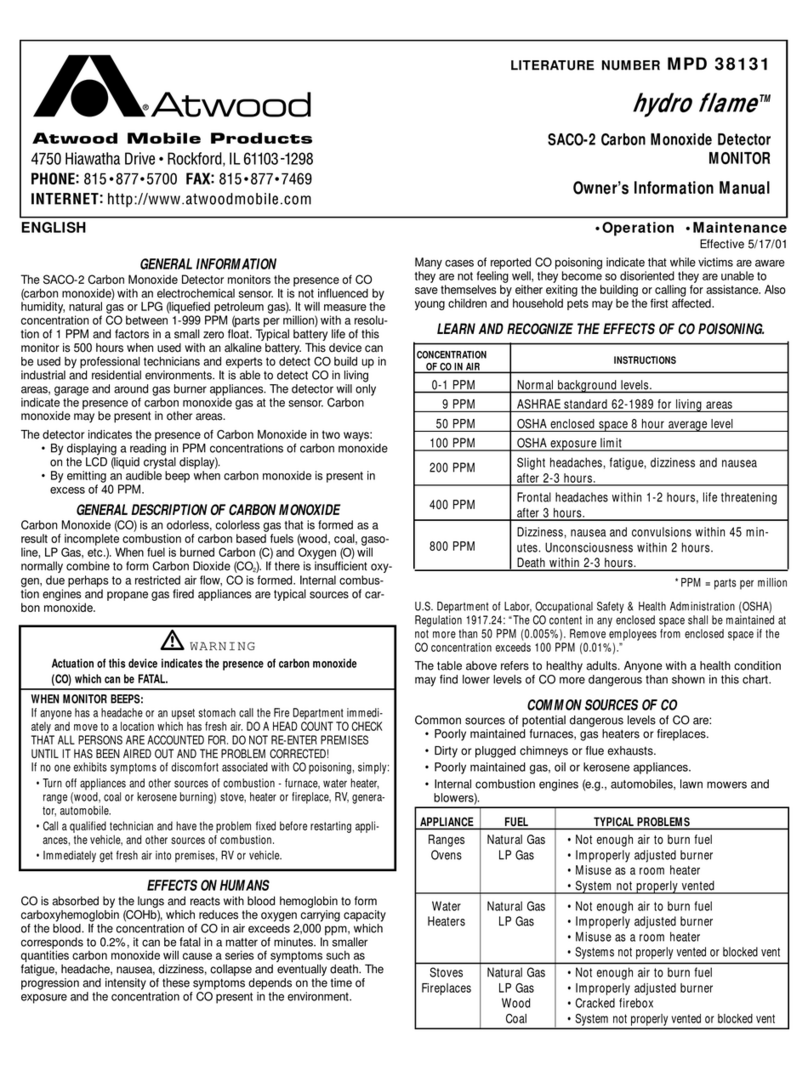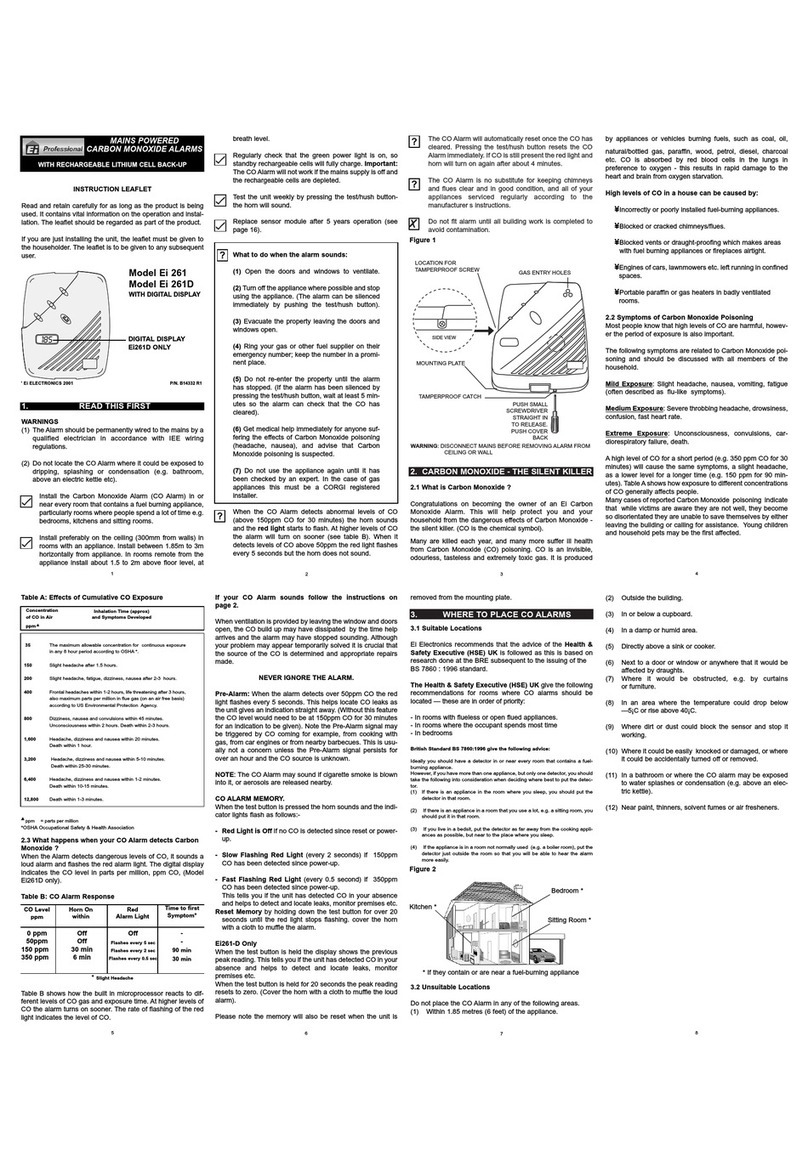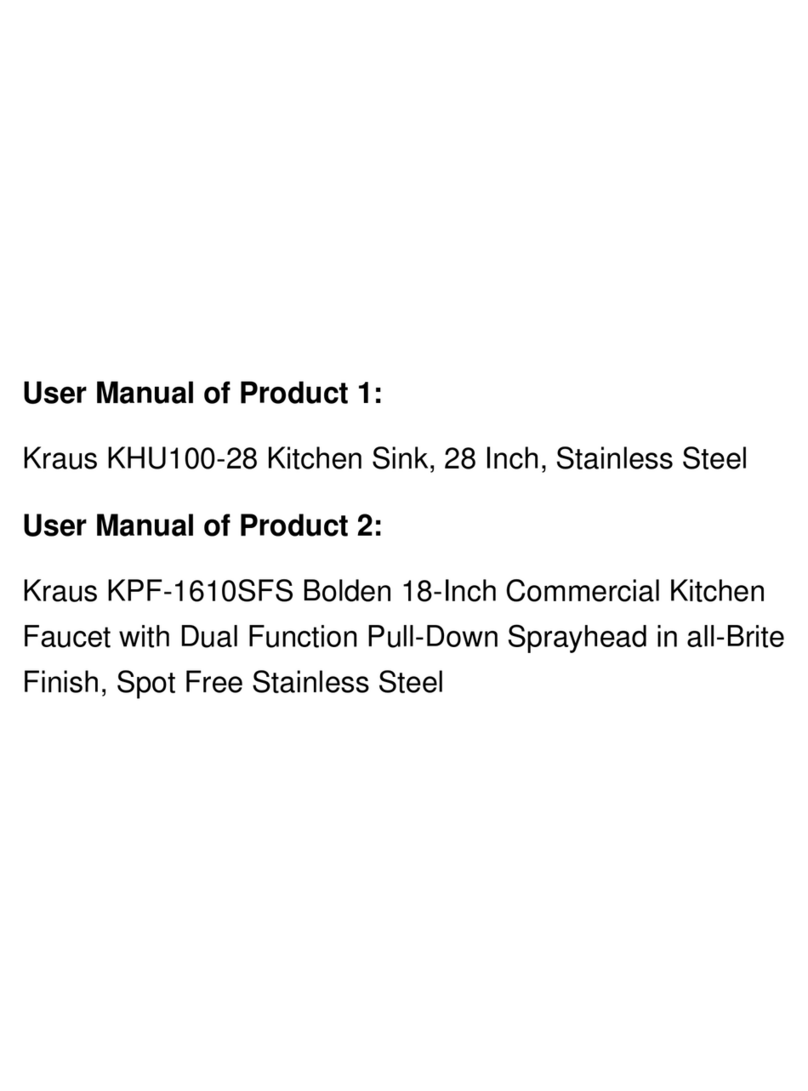
Sierra Monitor Corporation 1991 Tarob Court Milpitas, CA 95035 USA (408) 262-6611 (800) 727-4377 Fax: (408) 262-9042
Visit our website: www.sierramonitor.com E-mail: sierra@sierramonitor.com
You really have to have back-
bone to survive in the safety
monitoring world today. No,
there is no heavy lifting re-
quired. I am referring to the
data backbone of the facility,
plant or process to which the
monitoring system is applied.
In times past, gas monitor-
ing systems were free-stand-
ing, and any data they gen-
erated was collected and used
on a local basis. Today, plants
and other facilities most likely
require that all data be cen-
tralized so monitoring sys-
tems can perform their func-
tions and provide data to
higher-level systems. Data must be accessible
on plant-wide backbones, which come in many
flavors.
In addition to various proprietary data busses,
some plant backbones are serial-based
(Modbus RTU, DF1, Metasys), many are based
on Ethernet architecture (Modbus TCP,
EtherNet/IP, BACnet/IP) and others are based
on fieldbusses such as Profibus, DH+ and
ControlNet. This discussion is confined to se-
rial data busses and Ethernet networks, but
the principals and issues are universal.
A strong backbone
The challenge for industrial hygiene profes-
sionals is to determine which backbone inter-
face is required and then ensure that the se-
lected equipment meets that requirement.
Figure 1 represents the minimum requirements
for a gas detection system that are generally
well understood. The system must include gas
detection modules, a method to communicate
to a controller, flexible alarm handling with relay
outputs, and a method for communicating data
to higher-level systems. In this case, serial
communications are used to provide data to a
dedicated computer.
Technical Reprint TR-005
Gas Detection Systems
How to make your facility's monitoring data accessible
by Gordon Arnold
For purposes of meeting future requirements
to integrate data to a facility backbone, this
minimum system with serial communications
is now well on the way to plant-wide integra-
tion. At the Control level the system provides
sensor monitoring and also controls the alarm
activities. At the Information level data can be
retrieved from the controller via the serial con-
nection. The facility IT group, plant process
control team or the building automation con-
sultants are now free to investigate opportu-
nities to interface to the gas detection system
via the plant backbone.
The terms “serial communication” or “Ethernet”
describe only the electrical hardware charac-
teristics of the backbone, such as the type of
wires and the methods of connection. Com-
paring to an office equipment environment, a
serial connection would interface a computer
to a modem, while an Ethernet connection
would network the computer and allow it to
communicate with a server, a network printer
or many other devices. The aspect that is not
yet described is the protocol, which is the data
format and handling instructions that travel
on the backbone.
